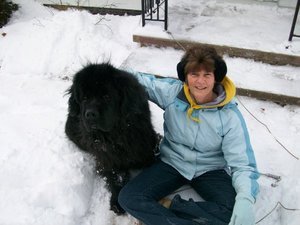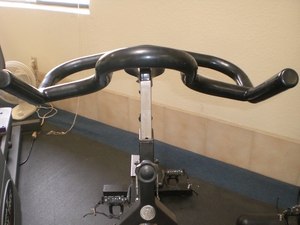Ralph Dale Earnhardt, Sr. was born on April 29th, 1951 to Ralph Lee Earnhardt and Martha Coleman. He was born and raised in Kannapolis, North Carolina, a small town just outside Charlotte. His children were Kerry (born on December 8th, 1969), Kelley King (August 28th, 1972), Ralph Dale Jr (October 10th, 1974), and Taylor Nicole (December 20th, 1988).
Earnhardt married Teresa, his wife of twenty years in November of 1982.
His Racing Career
It’s only natural for most young boys to want to follow in their father’s footsteps, but that was especially true for Dale Earnhardt. His father Ralph was a natural born racer as he regularly participated in Stock Car racing events held all over the Southeast. The more Earnhardt watched his father win races, the more it fueled his aspiration to one-day grip the steering wheel of one of those stock cars. The older he grew, the more determined he became as his passion for racing was apparent.
As a teenager, Earnhardt worked at a local shop welding and mounting tires. After he clocked out of his day job, he would head straight to his garage and work on his race cars. At that time, Earnhardt was racing Hobby-class cars locally as he was supporting his racing career out of his own pocket. Sometimes, Earnhardt had to spend more money than he made, therefore, he had to borrow the funds in order to cover necessary expenses.
Despite being only 17 years old, Earnhardt’s responsibilities were already stacking up. He was married to his first wife and had a son on the way. On December 8th, 1969 Earnhardt’s eldest son Kerry was born. But the financial volatility took a toll on Earnhardt’s marriage and he eventually parted ways with his wife and son.
In 1973, Earnhardt’s father Ralph tragically died of a heart failure in his own garage while working on his race car. His father’s passing really effected him as he was devastated by the loss. Despite the tragic loss, Earnhardt continued to chase his dream of racing stardom as he competed on the Sportsman circuit.
Just two years later, Earnhardt’s short track racing results attracted some owners from the Winston Cup series, the highest form of stock car racing in the United States. Ed Negre hired Earnhardt to drive his Dodge in the 1975 World 600 at Charlotte Motor Speedway. Even though his Winston Cup debut didn’t result in the way he had anticipated as he finished 22nd, it would mark the first race of a legendary career.
Earnhardt spent the next three years appearing in just a handful of Winston Cup events, but in 1979, the break that he had been eagerly awaiting finally came to fruition. Rod Osterlund needed someone to drive his #2 Chevrolet’s after Dave Marcis’ departure. Earnhardt was the prime candidate as he had already driven in one race for Osterlund in 1978. It didn’t take long for Earnhardt to grab the attention of his rivals such as Richard Petty, Darrell Waltrip, and Cale Yarborough. In only his 16th start, Earnhardt turned a lot of heads when won his first Winston Cup race at Bristol Motor Speedway. He proved that his early success was no fluke as he would go on to win Rookie Of The Year in 1979 despite missing four races due to an injury.
In 1980, Earnhardt won the Winston Cup title in only his second full year in the series by winning five races and became the only driver to win the rookie of the year and the Winston Cup championship in successive seasons.
During the 1981 season, Osterlund decided to sell his team to J.D. Stacy. With Earnhardt and Stacy seemingly at odds, Earnhardt bolted when the opportunity to drive for Richard Childress became available. After their first season together, Childress advised Earnhardt to accept a ride with Walter ‘Bud’ Moore along with the Wrangler Jeans sponsorship. Earnhardt won three times in his two seasons driving Bud Moore’s Ford Thunderbirds. By 1984, Earnhardt and Wrangler had once again formed an alliance with Childress. This eventually became one of the most famous and successful collaborations in motor sports history.
Earnhardt won championships in 1986 and 1987 and won a combined sixteen races in those two seasons. In 1988, Childress and Earnhardt traded in the yellow and blue Wrangler colors for the black and silver GM Goodwrench colors. Earnhardt’s black and silver #3 Chevy became his trademark as he was nicknamed ‘the Intimidator’ and ‘the Man In Black’.
As the 1990’s commenced, Earnhardt quickly returned to championship form. He would win the championship in four of the next five years. By winning the 1994 Winston cup title, Earnhardt would match Richard Petty’s record breaking seventh championship. In 1995, Earnhardt would come up short in winning his eighth title as he passed the torch to the up and coming Jeff Gordon. In August of that year, Earnhardt would win the second annual Brickyard 400 at the celebrated Indianapolis Motor Speedway.
In 1997, Earnhardt would experience something that he hasn’t experienced since 1981, a winless season. Even though Earnhardt was a consistent front-runner throughout the year, he was unable to find victory lane.
In 1998, Earnhardt would once again experienced something that he had yet to experience, but this time it was a Daytona 500 win. After 20 years of trying, Earnhardt finally won the Super Bowl of stock car racing, a race that had evaded him throughout his career.
Earnhardt’s son Dale Earnhardt Jr would join him on the NASCAR circuit full-time in 2000. Earnhardt Jr won his first race at Texas Motor Speedway in only his 12th career start. In August of that season at Michigan International Speedway, his eldest son Kerry would qualify for the Pepsi 400 driving for Dave Marcis. That would be the first and only time that Earnhardt would compete in the same race against both of his sons together.
Earnhardt would win twice in 2000 and finish second to Bobby Labonte in the final Winston Cup points standings. His final win would be the Winston 500 at Talladega on October 15th, 2000.
In February of 2001, Earnhardt and his son Earnhardt Jr would enter the Rolex 24 Hours at Daytona as a team. The duo would finish second in their class and fourth overall in the annual sportscar event.
As the 2001 season began, many favored Earnhardt not only to win his second Daytona 500 but also his record breaking eighth championship. Unfortunately, Earnhardt was tragically killed in a fatal accident on the last lap of the Daytona 500 on February 18th, 2001. His death touched many fans all over the United States. Whether they were fans of Earnhardt or someone else, almost everyone in America mourned the passing of Dale Earnhardt.
Earnhardt was survived by his wife Teresa, his mother Martha, and his four children Kerry, Kelley, Dale Jr., and Taylor.
Career Accomplishments
Rookie of the Year, 1979
Seven-Time NASCAR Winston Cup Series Champion – 1980, 1986, 1987, 1990, 1991, 1993, 1994
Five-time NMPA Driver of the Year – 1980, 1986, 1987, 1990, 1994
Only six-time winner of the Busch Clash – 1980, 1986, 1988, 1991, 1993, 1995
Three-time winner of the Winston All-Star Race – 1987, 1990, 1993
Two-time American Driver of the Year – 1987, 1994
Four-time winner of the International Race of Champions- 1990, 1995, 1999, 2000
Seven-time winner of the Goody’s 300 Busch Series at Daytona (including five straight wins from 1990 – 1994)
Daytona 500 Winner – 1998
First American driver to receive AUTOSPORTS Gregor Grant Award
First Winston Cup driver to drive at Suzaka Circuitland, Japan
12-time winner of the 125-mile qualifying race at Daytona (including ten straight wins from 1990 – 1999)
Named ESPY’s “Driver of the Decade” (1990’s)
Year 2000 marked Earnhardt’s 22nd full season on the NASCAR Winston Cup Circuit
“Most Popular Driver” Award, 2001


